Table of Contents
The Indian Institute of Technology (IIT) Guwahati has released the GATE Mechanical Engineering Syllabus 2026 on its official website at www.iitg.ac.in. IIT Guwahati will conduct the GATE 2026 exam in February 2026 for students who want to get admission into M.E., M.Tech, or Ph.D. programs at top institutes like IITs, NITs, IIITs, and CFTIs. The GATE score is also useful for getting good engineering jobs in various Public Sector Undertakings (PSUs). This page provides the complete GATE 2026 Mechanical Engineering syllabus to help students prepare better and score higher in the exam. The syllabus is divided into four main sections: Applied Mechanics & Design, Engineering Mathematics, Fluid Mechanics & Thermal Sciences, Materials, Manufacturing & Industrial Engineering. All these sections will have questions in the GATE 2026 exam. This article explains the detailed syllabus for Mechanical Engineering to support aspirants in their exam preparation.
GATE Mechanical Syllabus 2026
If you are preparing for GATE 2026 in Mechanical Engineering, it is very important to have a clear understanding of the GATE Mechanical Syllabus 2026. Knowing the syllabus is the first and most important step toward your exam preparation. This article will help you get complete details about the syllabus so that you can plan your studies in the right direction. To score well in the GATE 2026 exam, you must carefully study and cover every part of the Mechanical Engineering syllabus.
GATE Mechanical Engineering Syllabus 2026-Overview
The aspirants from the Mechanical Engineering discipline going to appear in the GATE 2026 Exam must refer to the section below to get a detailed overview of the GATE Mechanical Engineering syllabus 2026.
| GATE Mechanical Engineering Syllabus 2026 | |
| GATE Full Form | Graduate Aptitude Test for Engineering (GATE) |
| GATE 2026 Conducting Authority | IIT Guwahati |
| GATE 2026 Number of Papers | 30 |
| GATE 2026 Mode of Exam | Computer-Based Test (CBT) |
| GATE 2026 Mechanical Exam | To Be Notified |
| Number of Questions Asked | 65 |
| GATE 2026 Marks Distribution | 15 Marks (General Aptitude) + 85 Marks (Subject Questions)= 100 Marks (Total) |
| GATE Exam Language | English |
| GATE 2026 Marking Scheme | One Mark and Two Marks |
| Negative Marking | Yes |
| GATE Official Website | @gate.iisc.ac.in |
GATE Exam 2026
The Graduate Aptitude Test in Engineering (GATE) is one of the most well-known exams in India. It helps students get admission into top postgraduate programs and also opens the door to jobs in Public Sector Undertakings (PSUs). The GATE exam provides many career opportunities in various technical fields.
GATE 2026 will be a computer-based exam held at the national level. It checks how well students understand subjects related to Engineering and Science. The exam will be conducted by IIT Guwahati and will cover 30 different subjects. This exam is seen as a great way to start a strong career in engineering. Students preparing for GATE 2026 should follow ADDA247 regularly for the latest updates about the exam.
GATE Mechanical Engineering Syllabus 2026
To score good marks in the GATE Exam 2026 in the Mechanical Engineering Paper, the candidates must know the in-depth GATE Mechanical Syllabus 2026 to ace the exam. The GATE Mechanical Syllabus 2026 will help to plan and strategize the preparation well to score the highest marks in the upcoming GATE Exam.
Through the GATE Syllabus of Mechanical Engineering, candidates can grasp and revise the concepts very well to ace their preparation. In this article, we have covered everything regarding the GATE Mechanical Engineering Syllabus 2026. The candidates must read the full article to know the complete GATE 2026 Mechanical Syllabus briefly.
GATE Mechanical Exam Pattern 2026
The GATE 2026 Mechanical Engineering Paper will ask questions to check your Application, Analysis, Comprehension, Recall, and Synthesis abilities. The GATE 2026 Question Paper will comprise the questions in either MCQ, MSQ & NAT (Numerical Answer Type).
The candidates must check the GATE 2026 Exam Pattern for Mechanical Engineering through the table given below to get a clear idea about the GATE 2026 Paper Scheme for the Mechanical Engineering branch.
| GATE Mechanical Exam Pattern 2026 | |
| GATE Exam 2024 Mode | Computer-Based Test (Online) |
| Exam Duration | 3 Hours |
| No. of Subjects | 30 Subjects |
| Total Marks | 100 Marks |
| Number of Questions | 10 (GA) + 55 (subject) = 65 Questions |
| Type of Questions | Multiple Choice Questions (MCQs), Multiple Select Questions (MSQs), and Numerical Answer Type Questions (NATs) |
GATE Mechanical Engineering Syllabus PDF
The candidates can download the GATE Mechanical Engineering Syllabus PDF through the direct link given below. The candidates must refer to the syllabus to enhance their preparation for the GATE 2026 Test. A proper understanding of the Mechanical Syllabus 2026 will help the candidates to get good marks and success, as they can plan and strategize beforehand as per the GATE Mechanical Engineering Syllabus 2026.
GATE Mechanical Engineering Syllabus 2026- Click Here
GATE Mechanical Syllabus In Detail
The topic-wise, detailed GATE Mechanical Engineering Syllabus is given here to help students aiming to crack it with a good score. You must go through the GATE 2026 Mechanical Engineering Syllabus prescribed below:
Section 1- Engineering Mathematics
Linear Algebra
- Matrix algebra
- systems of linear equations
- eigenvalues and eigenvectors
Calculus
- Functions of a single variable
- limit
- continuity and differentiability
- mean value theorems
- indeterminate forms
- evaluation of definite and improper integrals
- double and triple integrals
- partial derivatives
- total derivative
- Taylor series (in one and two variables)
- maxima and minima
- Fourier series
- gradient
- divergence and curl
- vector identities
- directional derivatives
- line, surface, and
- volume integrals
- Applications of Gauss
- Stokes’s and Green’s theorems
Differential Equations
- First-order equations (linear and nonlinear)
- higher-order linear differential equations with constant coefficients
- Euler-Cauchy equation
- initial and boundary value problems
- Laplace transforms
- solutions of heat, wave, and Laplace’s equations
Complex Variables
- Analytic functions
- Cauchy-Riemann equations
- Cauchy’s integral theorem and
- integral formula
- Taylor and Laurent series
Probability and Statistics
- Definitions of probability
- sampling theorems
- conditional probability
- mean, median, mode, and standard deviation
- random variables
- binomial
- Poisson and normal distributions
Numerical Methods
- Numerical solutions of linear and non-linear algebraic equations
- integration by trapezoidal and Simpson’s rules
- single and multi-step methods for differential equations
Section 2- Applied Mechanics and Design
Engineering Mechanics
- Free-body diagrams and equilibrium
- friction and its applications, including rolling friction
- belt-pulley
- brakes
- clutches
- screw jack
- wedge, vehicles, etc
- trusses and frames
- virtual work
- kinematics and dynamics of rigid bodies in plane motion
- impulse and momentum (linear and angular) and energy formulations
- Lagrange’s equation
Mechanics of Materials
- Stress and strain
- elastic constants
- Poisson’s ratio
- Mohr’s circle for a plane
- stress and plane strain
- thin cylinders
- shear force and bending moment diagrams
- bending and shear stresses
- Concept of shear center
- deflection of beams
- torsion of circular shafts
- Euler’s theory of columns
- energy methods
- thermal stresses
- strain gauges and rosettes
- testing of materials with the universal testing machine (UTM)
- testing of hardness and impact strength
Theory of Machines
- Displacement
- velocity and acceleration analysis of plane mechanisms
- dynamic analysis of linkages
- cams
- gears and gear trains
- flywheels and governors
- balancing of reciprocating and rotating masses
- gyroscope
Vibrations
- Free and forced vibration of single-degree-of-freedom systems
- effect of damping
- vibration isolation
- resonance
- critical speeds of shafts
Machine Design
- Design for static and dynamic loading
- failure theories
- fatigue strength and
- the SN diagram
- principles of the design of machine elements, such as bolted
- riveted and welded joints
- shafts
- gears
- rolling and sliding contact bearings
- brakes and clutches
- springs
Section 3: Fluid Mechanics and Thermal Sciences
Fluid Mechanics
- Fluid properties
- fluid statics
- forces on submerged bodies
- stability of floating bodies
- control-volume analysis of mass
- momentum and energy
- fluid acceleration
- differential equations of continuity and momentum
- Bernoulli’s equation
- dimensional analysis
- viscous flow of incompressible fluids
- boundary layer
- elementary turbulent flow
- flow through pipes
- head losses in pipes
- bends and fittings
- basics of compressible fluid flow
Heat-Transfer
- Modes of heat transfer
- one-dimensional heat conduction
- resistance concept and electrical analogy
- heat transfer through fins
- unsteady heat conduction
- lumped parameter system
- Heisler’s charts
- thermal boundary layer
- dimensionless parameters in free and
- forced convective heat transfer
- heat transfer correlations for flow over flat plates and through pipes
- effect of turbulence
- heat exchanger performance
- LMTD and NTU methods
- radiative heat transfer
- Stefan-Boltzmann law
- Wien’s displacement law
- black and grey surfaces
- view factors
- radiation network analysis
Thermodynamics
- Thermodynamic systems and processes
- properties of pure substances
- The behavior of ideal and real gases
- Zeroth and first laws of thermodynamics
- calculation of work and heat in various processes
- second law of thermodynamics
- thermodynamic property charts and tables
- availability and irreversibility
- thermodynamic relations
Applications:
- Power Engineering: Air and gas compressors
- Vapor and gas power cycles
- concepts of regeneration and reheat
- I.C. Engines: Air-standard Otto
- Diesel and dual cycles
- Refrigeration and air-conditioning
- Vapor and gas refrigeration and heat pump cycles
- properties of moist air
- psychrometric chart
- basic psychrometric processes
- Turbomachinery: Impulse and reaction
- principles
- velocity diagrams
- Pelton-wheel
- Francis and Kaplan turbines
- steam and gas turbines
Section 4- Materials, Manufacturing, and Industrial Engineering
Engineering Materials
- Structure and properties of engineering materials
- phase diagrams
- heat treatment
- stress-strain diagrams for engineering materials
- Casting
- Forming and Joining Processes
- Different types of castings
- design of patterns
- Molds and cores
- solidification and cooling
- riser and gating design
- Plastic deformation and yield criteria
- Fundamentals of hot and cold working processes
- load estimation for bulk (forging, rolling, extrusion,
drawing) and - sheet (shearing, deep drawing, bending) metal forming processes
- principles of powder metallurgy
- Principles of welding
- brazing
- soldering and
- adhesive bonding
Machining and Machine Tool Operations
- Mechanics of machining
- basic machine tools
- single and multi-point cutting tools
- tool geometry and materials
- tool life and wear
- economics of machining
- principles of non-traditional machining processes
- principles of work holding
- jigs and fixtures
- abrasive machining processes
- NC/CNC machines and
- CNC programming
Metrology and Inspection
- Limits
- fits and tolerances
- linear and angular measurements
- comparators
- interferometry
- form and finish measurement
- alignment and testing methods
- Tolerance analysis in manufacturing and assembly
- concepts of the coordinate-measuring machine (CMM)
Computer-Integrated Manufacturing
- Basic concepts of CAD/CAM and their integration tools
- additive manufacturing
Production Planning and Control
- Forecasting models
- aggregate production planning
- scheduling
- materials requirement planning
- lean manufacturing
Inventory Control
- Deterministic models
- safety stock inventory control systems
Operations Research
- Linear programming
- simplex method
- transportation
- assignment
- network
- flow models
- simple queuing models
- PERT and CPM

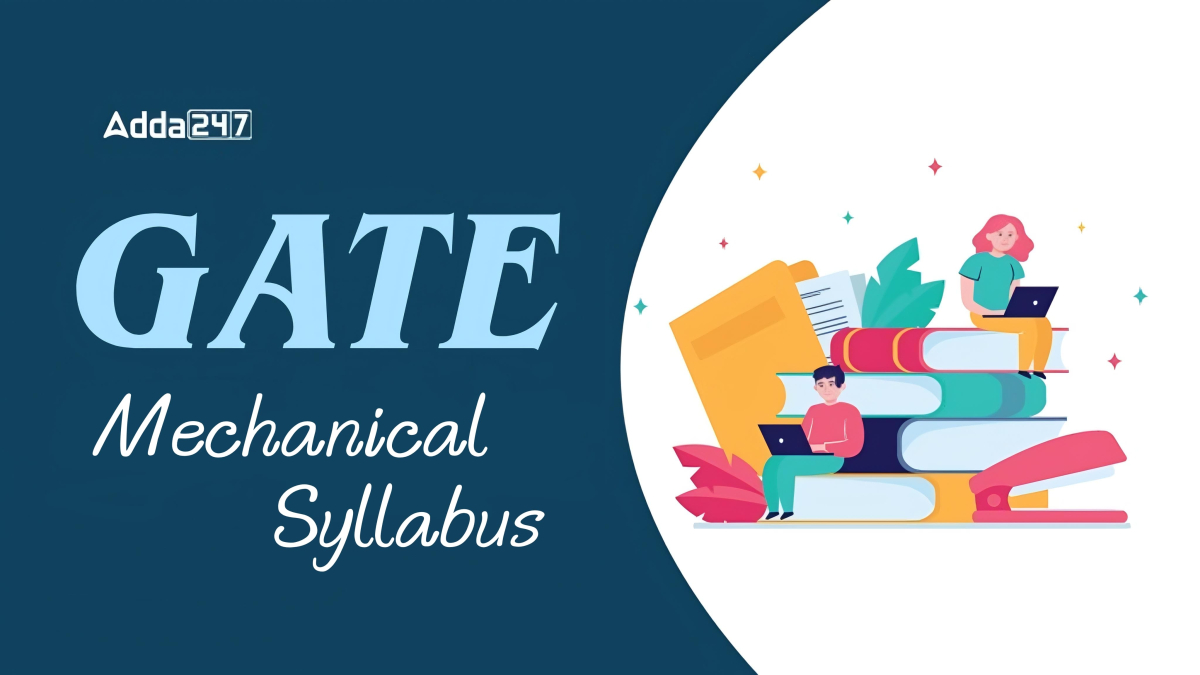
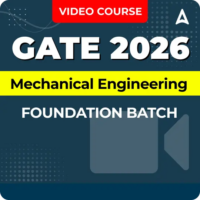

 BEL Trainee Engineer Syllabus 2026, Chec...
BEL Trainee Engineer Syllabus 2026, Chec...
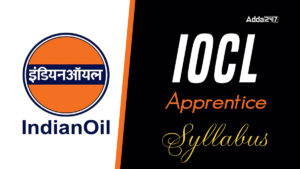 IOCL Apprentice Syllabus 2025, Check New...
IOCL Apprentice Syllabus 2025, Check New...
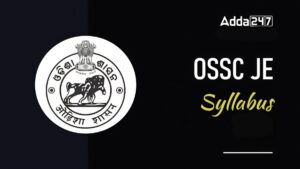 OSSC JE Syllabus 2026, Check Complete Ex...
OSSC JE Syllabus 2026, Check Complete Ex...
